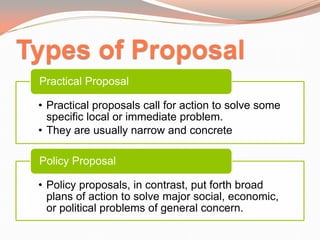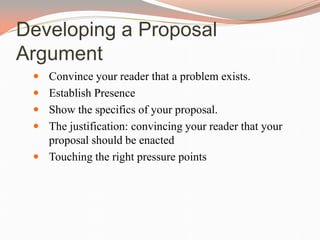This document discusses types of proposal arguments and strategies for strengthening proposal arguments. There are two main types of proposals: practical proposals that call for action on a specific local problem, and policy proposals that put forth broad plans of action for major social, economic, or political problems. To convince readers, proposals need to demonstrate knowledge, provide concrete information, research alternatives, prove feasibility, adapt to the audience, and be attractive. Effective proposal arguments establish that a problem exists, propose a solution, justify the solution, and address opposing views.



























